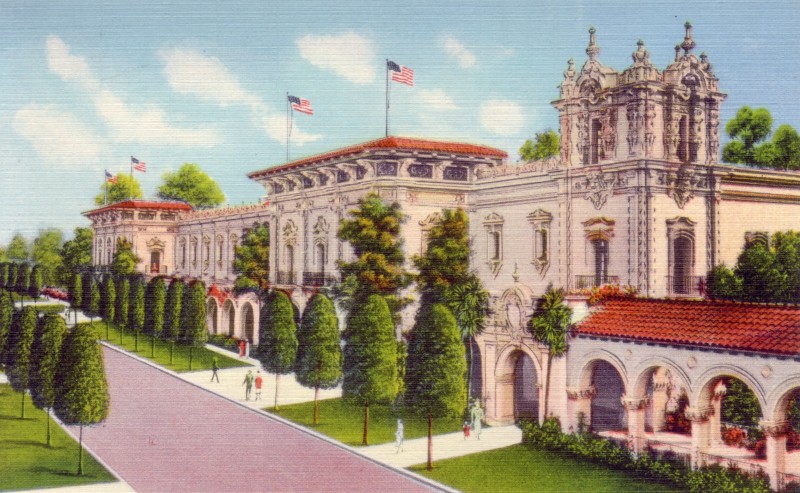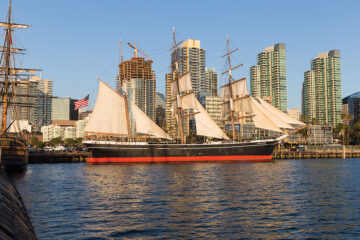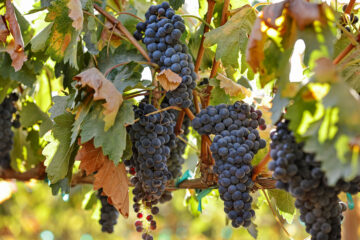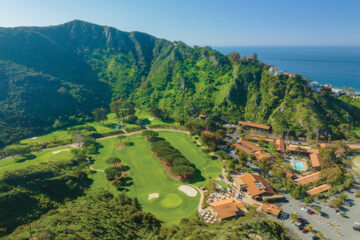Balboa Park: Commerce and Industries Building

What is now known as Casa de Balboa, located at the east end of the Prado, began life as the Commerce and Industries Building and is still frequently referred to as the Electric Building. As with so many of the other 1915 structures, it has had many names over the years. The use of the building that first year was eclectic and multipurpose, aimed at drawing crowds, and inside, visitors were treated to a wide range of exhibits. Still, the initial Expo name stuck for only one year. In 1916, the Commerce and Industries Building was renamed the Canadian Building, allowing Canada to tell its story and display its many products. Canada’s dynamic attraction offered visuals of Canadian harbors, a miniature train, and live beavers.
Interestingly, the initial design for the building, produced by architect Carleton M. Winslow in 1912, does not resemble the finished product of 1915. As originally envisioned, the style was to be Spanish Renaissance and the structure was to be named the Domestic Liberal Arts Building. So much for that.
Architectural hallmarks of the 1915 building include richly ornamented windows with curved balconies and iron railings. The building’s eaves and cornices, displaying nude figures of women, may have been based on those of the town hall in Palma, Majorca. Hues of bright blue, red, green, and gold between the women created a pleasing effect. Frank P. Allen Jr. was the designer.
Following the close of the Panama-California International Exposition, the military took over the building and, in 1922, what is now the Natural History Museum occupied space.
Renamed once again, this time as the Palace of Better Housing for the 1935 California Pacific International Exposition, the building housed models and construction materials. It was later known as the Electric Building. During World War II, it was again taken over by the Navy, as was the rest of the park.
A disastrous fire on February 22, 1978 destroyed the original building. Tenants and the Committee of 100 deserve the credit for leading a successful fundraising effort to rebuild the structure, which officially reopened May 17, 1982 as Casa de Balboa.
Casa de Balboa houses some of Balboa Park’s most important and loved tenants, including the San Diego History Center, the Museum of Photographic Arts, the Model Railroad Museum, the offices of Committee of 100, and the Balboa Park Art Conservation Center. Like the Indian Arts Building (House of Charm), the Varied Industries and Food Products Building (Casa del Prado), and the Foreign Arts Building (House of Hospitality), this initially temporary building continues to impress in its now permanent form. DARLENE G. DAVIES
» The Federal Housing Administration wanted the public to know that for only $30 to $60 a month, people could own a home. So, the FHA created an exhibit behind the Palace of Better Housing (Commerce and Industries Building) at the 1935 Exposition. One of the features was a model town that showcased the latest up-to-date homes. DARLENE G. DAVIES

» “It isn’t Spanish architecture, it isn’t Mexican, it isn’t colonial, it isn’t anything but stage scenery.” That was how noted San Diego leader Philip L. Gildred described the Commerce and Industries Building — a reminder that most of the Panama-California Exposition buildings were temporary, built for entertainment, education, and amusement. They were never meant to last. DARLENE G. DAVIES
Imagery courtesy of Darlene G. Davies
Directory
The Great Panama-California Exposition
1915 Panama-California Exposition
Spreckels Outdoor Organ Pavilion
Gardens of the Panama-California Exposition
Legacy of the Foreign Arts Building
Panama-California Sculpture Court








Comments